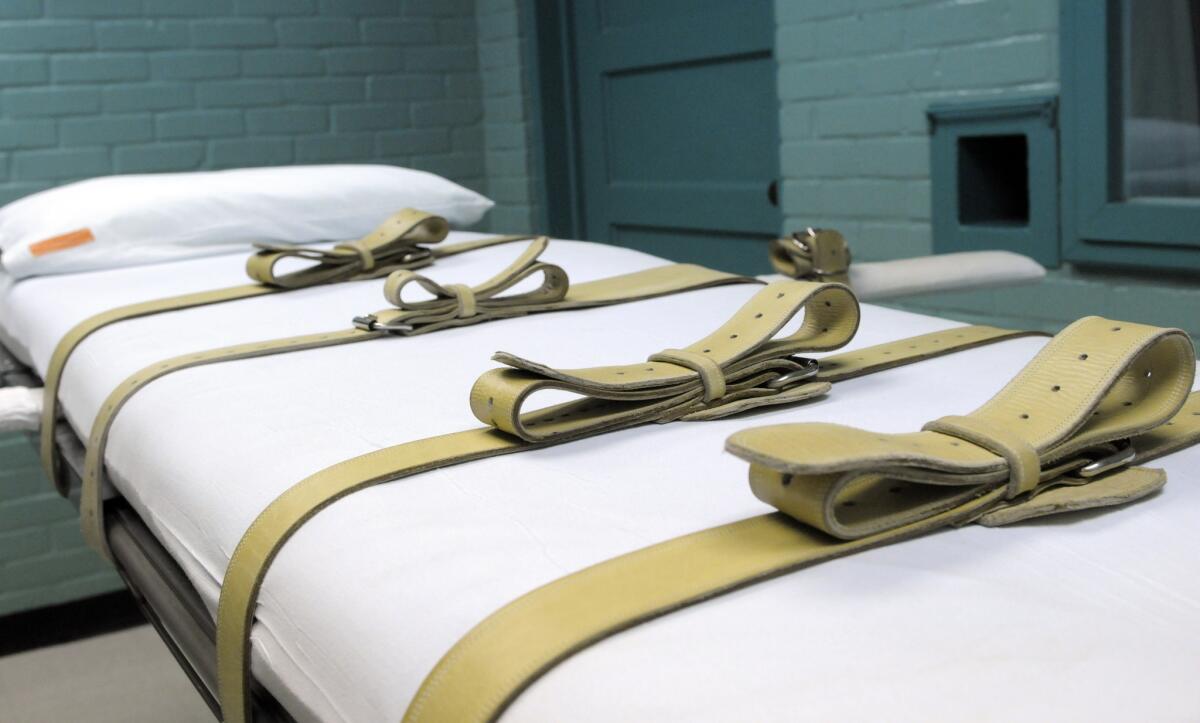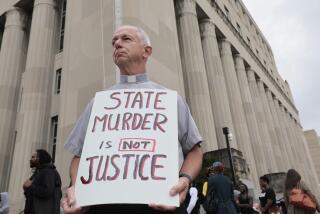As Texas nears 500th execution, ex-warden reflects on prison system

HOUSTON -- Next week, Texas is scheduled to execute its 500th prisoner since the death penalty was reinstated in 1976.
Barring stays or reprieves, the 500th execution is due to occur Wednesday — and the inmate is a woman.
Kimberly McCarthy, 52, a former occupational therapist, was convicted and sentenced to death in 1998 in connection with the beating and stabbing death of her 71-year-old neighbor during a robbery. She was originally scheduled to be put to death Jan. 29, but received a stay until April, and then saw her execution postponed again. Her attorneys recently appealed again to halt the execution, but there has been no decision yet.
McCarthy would be the 13th woman executed in the U.S. and the fourth in Texas since the Supreme Court allowed capital punishment to resume in 1976. During that time, more than 1,300 men have been executed nationwide.
Texas has enforced the death penalty more regularly than any other state, executing more people than the next six states combined (Virginia, Oklahoma, Florida, Missouri, Alabama and Georgia).
But that wasn’t always the case. Texas executed fewer than 10 people a year until 1992, when executions spiked under then-Gov. Ann Richards, a Democrat. The current governor, Republican Rick Perry, has presided over more than 200 executions, more than any other governor in modern history.
To learn more about the history of executions in Texas, which are carried out at the Walls Unit at Huntsville Prison, about 70 miles north of Houston, we talked to the director at the local Texas Prison Museum, Jim Willett, a former warden.
Did you know Huntsville is expected to have its 500th execution later this month? Is the museum doing anything related to that?
No, I didn’t know when it was. And I don’t want to seem like we’re celebrating.
What can you tell us about the history of executions in Huntsville?
Most people don’t know a lot about the executions. We’ve got a fairly good set-up here at the museum about the executions and the fact that prior to 1924, before they came to Huntsville, there were hangings in counties across the state. And there is, of course, the electric chair here — 361 men died in the chair. And we have a panel that explains the current way of doing executions: lethal injection.
When did you work at the prison? Was that an interesting time to be there?
I worked there for 30 years starting in 1971, retiring in 2001. When I got there, the inmates were still segregated in where they lived and the dining room and I got to see that change. And the prison system was still using the building tender system before it was done away with by the courts.
What was that?
It was a system where you had some inmates who were over other inmates. They had authority over the other inmates. They stopped that around ’82. When I went to work there, an inmate could only have visits from five people and they couldn’t write but to those people. Their mail was very limited. There were about 15 units [prisons] when I went to work there — now there’s over a hundred scattered all over the state. They had that tender system because they didn’t have that many employees. There’s over 30,000 employees there now.
Were you involved with executions? If so, how?
I was warden three years. We just so happened to have the three busiest years for the execution chamber the state has ever had. The one that sticks out the most in my mind as far as attracting protesters and media was Gary Graham. He was a fellow out of Houston, just an awful character who had done a bunch of crimes. He had walked up to a man in a grocery store parking lot and shot him dead. Some of the more well-known people got behind him and even showed up as witnesses at his execution —Jesse Jackson was there and Bianca Jagger and Al Sharpton.
Can you remember any women who were executed, for instance, Karla Faye Tucker, the first woman Texas executed after the death penalty was reinstated?
Betty Beats — I was the warden then and oversaw her execution. And another lady after her. Neither of those ladies got the exposure Karla Faye Tucker got. It had to do with a couple things — Karla Faye Tucker was a born-again Christian and she was a very likable person.
I noted a trivia item posted on the museum’s Facebook page and wondered about the answer: Which warden from the Huntsville Unit resigned after saying, “A man can’t be a warden and a killer”?
The warden that was at the prison at the time the state decided to change over and take over the executions, I believe his name was R. F. Coleman. He resigned in 1924 before the executions started in February.
What do you think of what he said?
I don’t agree with him. I’m not a proponent of executions and I’m not against them. I don’t really care. Personally, I’m a Christian and I think that goes right along with being a Christian. But, you know, there’s really no reason to keep doing them in the prison system — the counties could do it on their own.
Why did you go to work at the prison museum?
I’d been retired a few months and the prison museum was located in a building on the downtown square and it wasn’t doing much business and I got a call seeing if I wanted to come work there. I kind of needed that — to be around people. Then we moved out to the interstate and I started working full time.
How many museum employees used to work at the prison? How many years of prison experience do you have total?
We figured it up one time — we had probably 100 years or more.
What’s one of the oddest facts you know about Texas prison history?
There was a warden here in 1913, his name was R.M. Warden — so he was Warden Warden. He left saying that the prison system was too corrupt for him.
What are the most interesting items at the museum?
We have three pistols here in a display on escape attempts. These three pistols, most of the public comes through and pays no attention to them. To me they’re the most interesting thing we have here because they’re made out of wood. They’re fake. When I tell people that, they take a second look because they look so real. It’s a two-fold thing: How do you get so good you can make them look real and how do you do it when you don’t have the real thing to look at?
Did the inmates who made them escape?
No, the fake pistols were found before they got a chance to use them. But they’re painted and they look like real guns — you can even see the bullets in the chamber. I guarantee if I pull one on you, you’ll put your hands up.
What can people learn from the history of Huntsville, known as “Prison City?”
They can see how the prison system has evolved over the years and made progress — I hope it’s progress. The general public, most people don’t know what it’s like inside the prison walls. Here they can get a glimpse — we even have a replica cell they can go in.
How many visitors do you see?
Last year we had 30,400 people. And we’re running ahead of that a little bit this year. Most of our visitors come from out of Huntsville and you would be surprised how many come from out of state and out of the United States. We get a lot of foreign visitors. I was out front today and saw a couple from England.
Do you see many locals?
If we didn’t have the prison system here, you might not even have a red light in this town. There’s a great number of people here -- either they work for the prison system, their family or friends do.
Huntsville people will come visit us when they have company, but they’re around it all the time. And a lot of people in Huntsville try to keep this out of their lives. A lot of them don’t know when the executions are.
ALSO:
Oregon’s top court upholds governor’s right to block execution
Feisty, folksy Facebook page makes Ohio cop ‘Internet sensation’
A seventh wildfire erupts in Colorado, possibly from lightning strike
molly.hennessy-fiske@latimes.com
Twitter: @mollyhf
More to Read
Sign up for Essential California
The most important California stories and recommendations in your inbox every morning.
You may occasionally receive promotional content from the Los Angeles Times.











